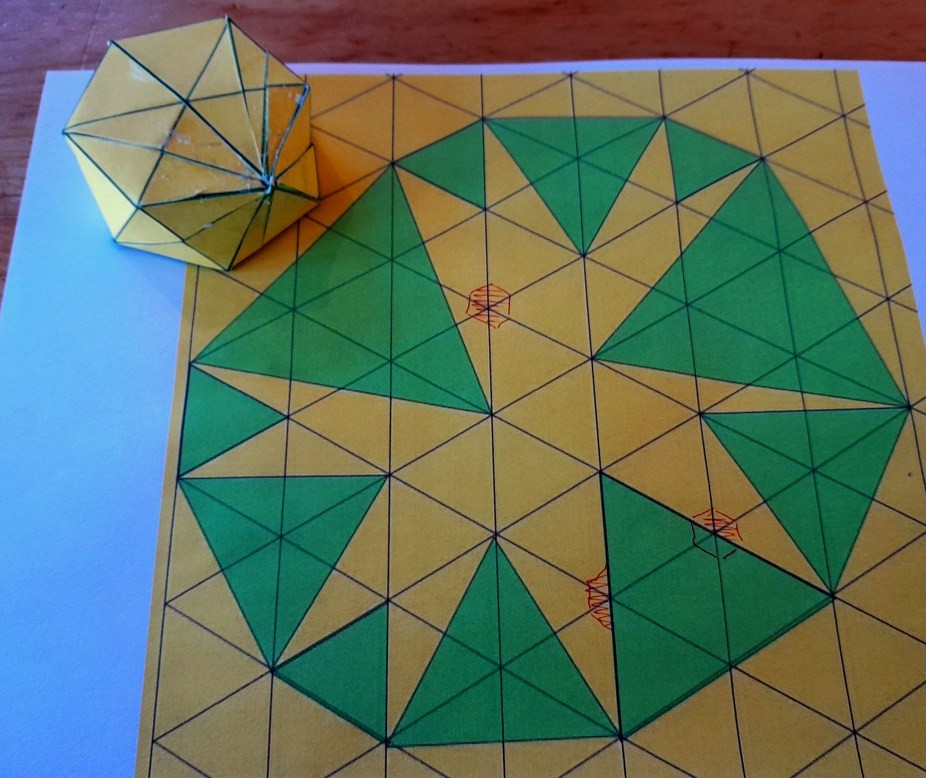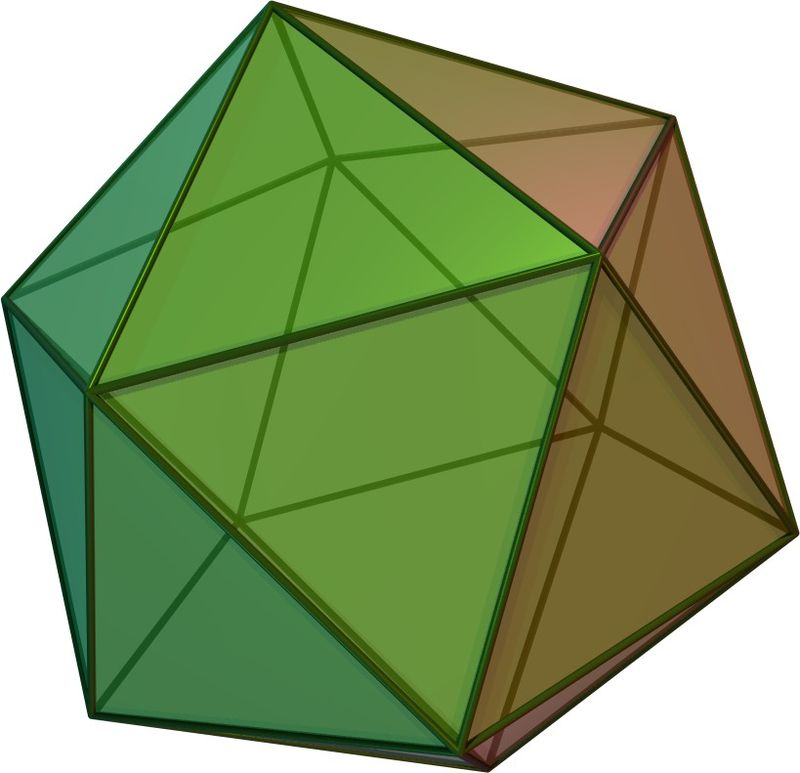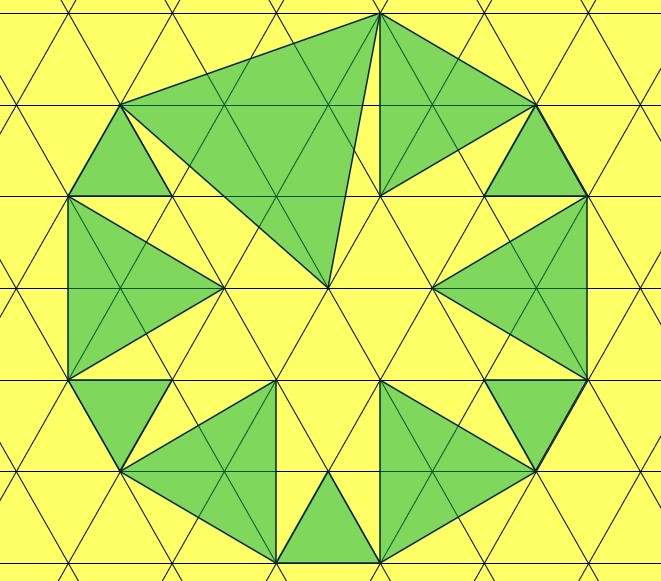The Icosahedron as a Thurston Polyhedron
Posted by John Baez
Thurston gave a concrete procedure to construct triangulations of the 2-sphere where 5 or 6 triangles meet at each vertex. How can you get the icosahedron using this procedure?
Gerard Westendorp has a real knack for geometry, and here is his answer.

Here is Thurston’s procedure. First draw the lattice of Eisenstein integers in the complex plane:
where . Then draw an 11-sided polygon whose vertices are Eisenstein integers. Along each edge of , draw an equilateral triangle pointing inward. Make sure to choose the polygon so that these triangles touch each other only at its corners.
If you remove these triangles, you are left with an 11-pointed star. You can always fold up this star so all its tips meet at one point, creating a convex polyhedron. This in turn gives a triangulation of the 2-sphere, where the triangles are those coming from the lattice of Eisenstein integers. 5 or 6 triangles will meet at each vertex.
Thurston proved a remarkable fact: using this method, you can get all triangulations of the 2-sphere where 5 or 6 triangles meet at each vertex. (By Euler’s formula or the Gauss–Bonnet theorem, there will always be 12 vertices where 5 triangles.)
In the above example, which is the one featured in my AMS Notices column, Gerard Westendorp got a polyhedron called the hexagonal antiprism.
But in my column I posed the following puzzle: how can you get the regular icosahedron?

Here is Westendorp’s answer:

Want to check his work? Print it out, cut out the star, and fold it up!


Two different answers
The photo and the diagram do not match.